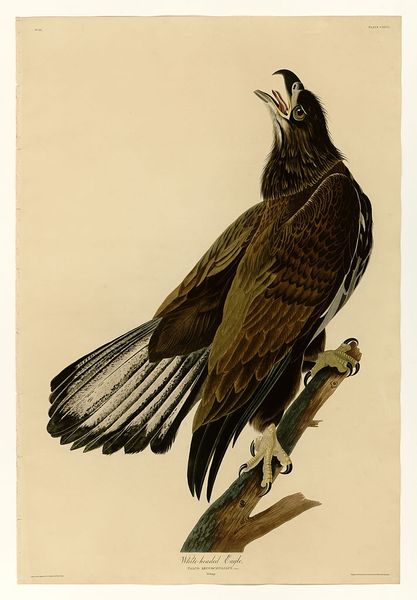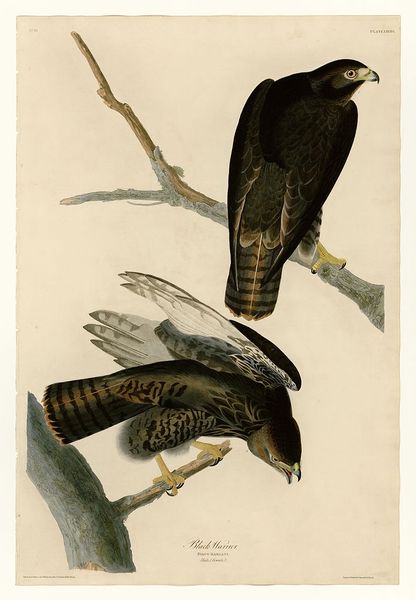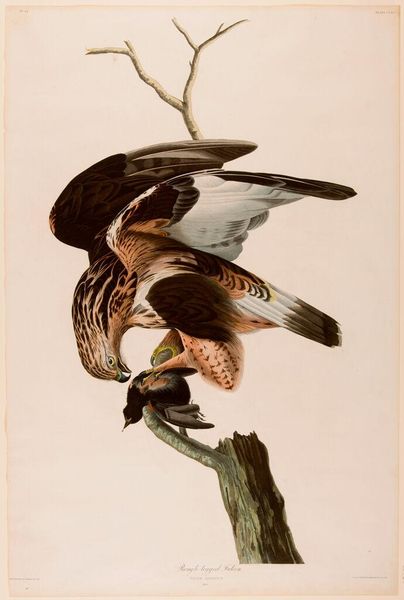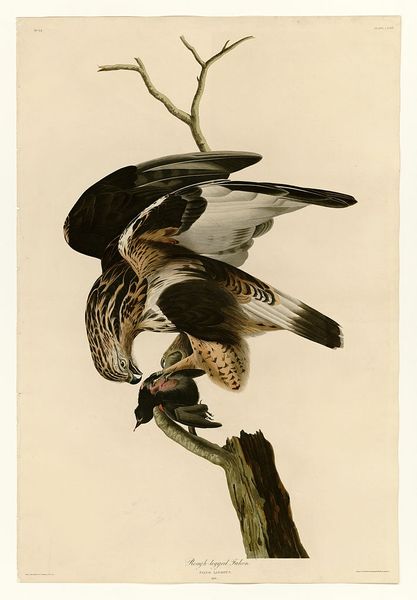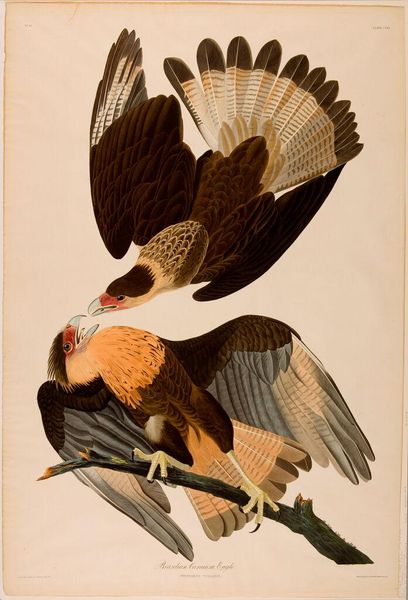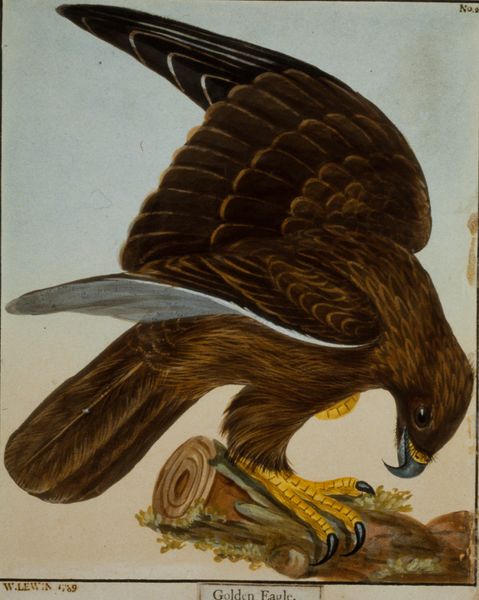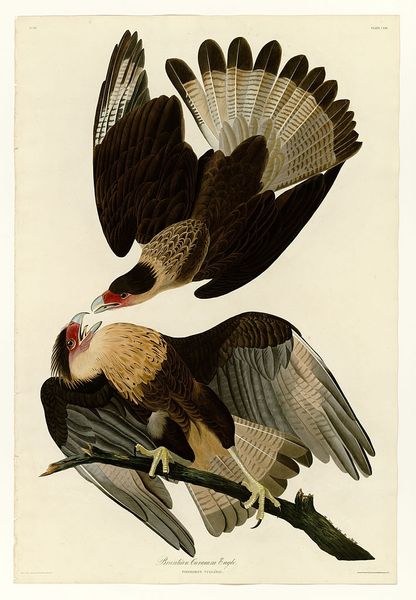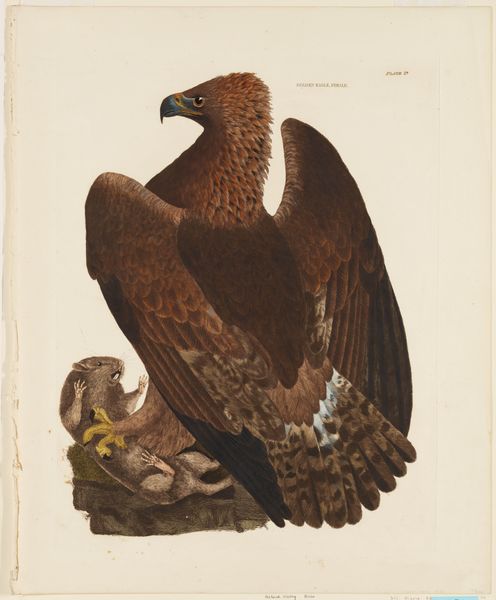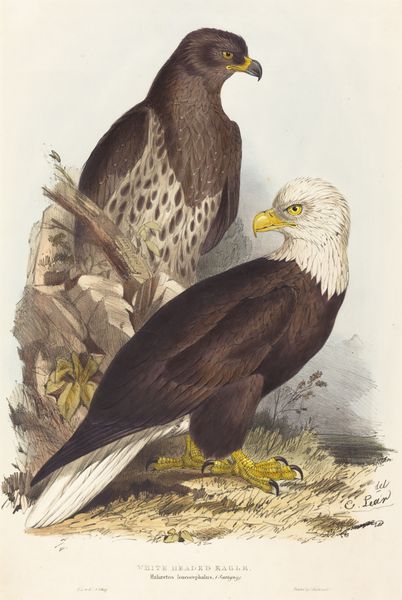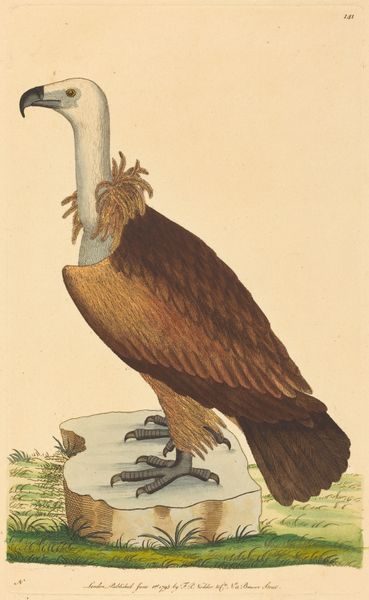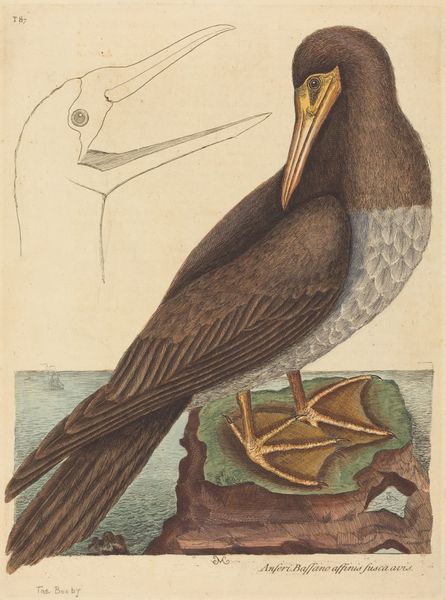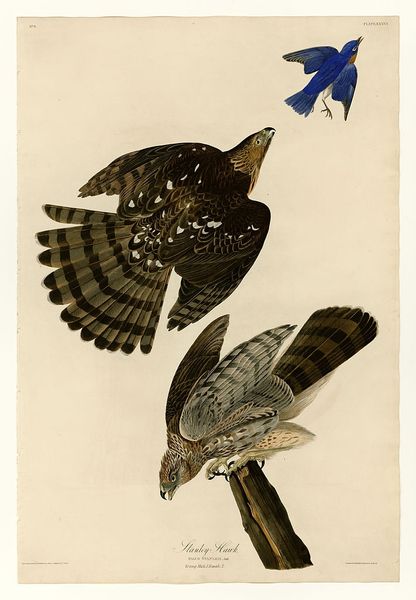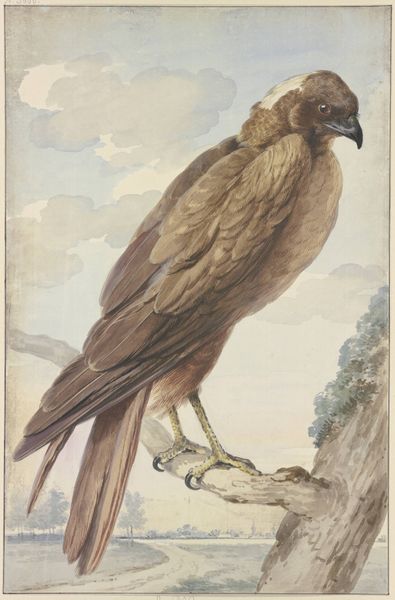
Dimensions: sheet: 94.9 Ã 74.3 cm (37 3/8 Ã 29 1/4 in.)
Copyright: CC0 1.0
Editor: So, here we have Robert Havell Junior's "White-Headed Eagle." It feels… intense, almost confrontational, with the eagle looking directly up and ready to squawk. What do you see when you look at this? Curator: I see more than just a bird. Consider the historical context. This image, made in the early 19th century, taps into the then-emerging American identity. The eagle, a symbol laden with power, freedom, and conquest, also masks a violent displacement of Indigenous peoples and a romanticization of expansionism. What is the artist trying to say, and whose voices are being silenced? Editor: So, it's not just a straightforward symbol of liberty, but part of a more complex narrative? Curator: Exactly. The choice of subject and the timing of its creation force us to confront uncomfortable truths about the foundations of American power and its relationship to the natural world and its inhabitants. It's a potent reminder that symbols are never neutral. Editor: That gives me a lot to think about. Thanks! Curator: My pleasure. It's crucial to see art as a participant in broader social and political dialogues.
Comments
No comments
Be the first to comment and join the conversation on the ultimate creative platform.
